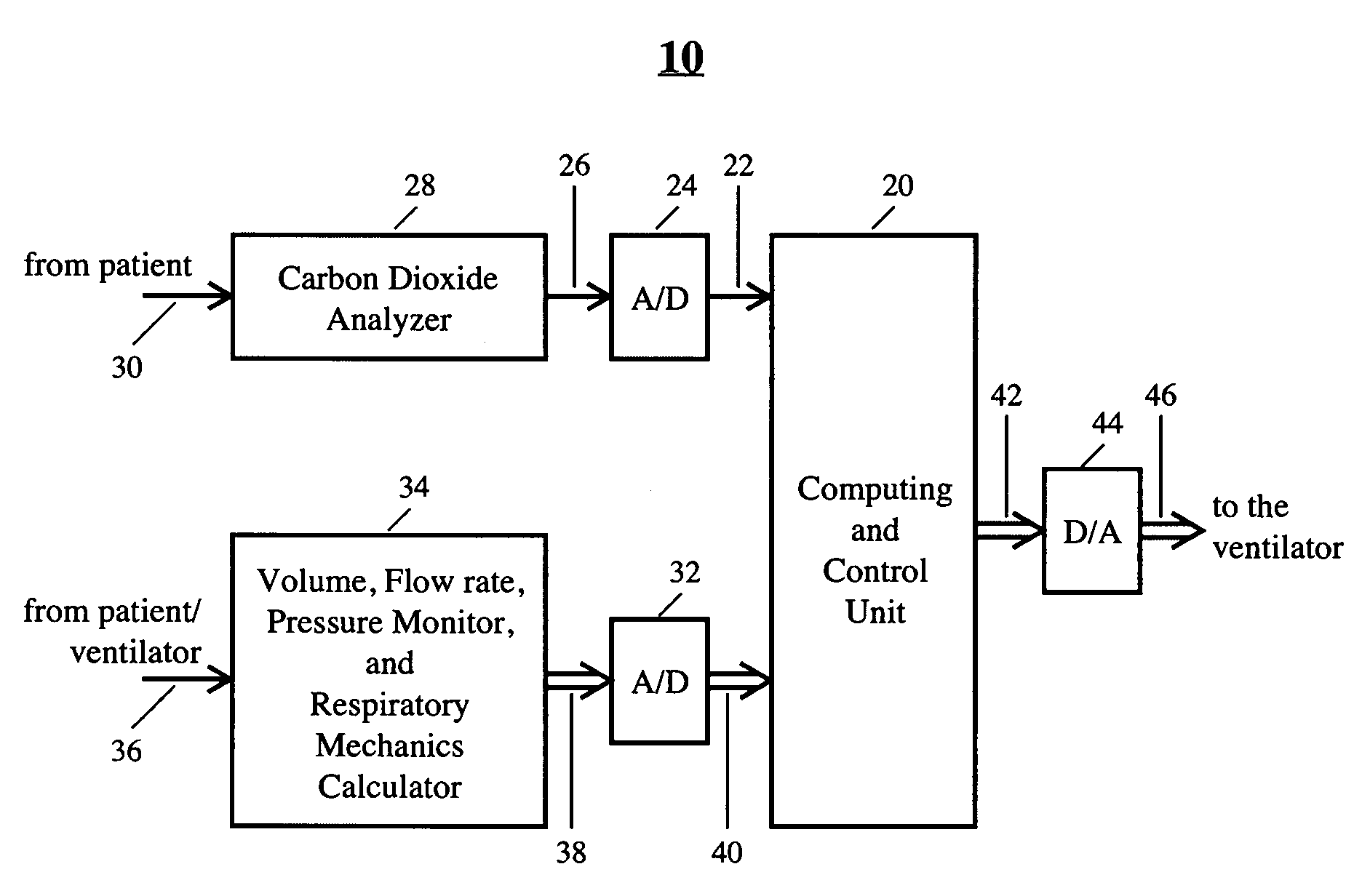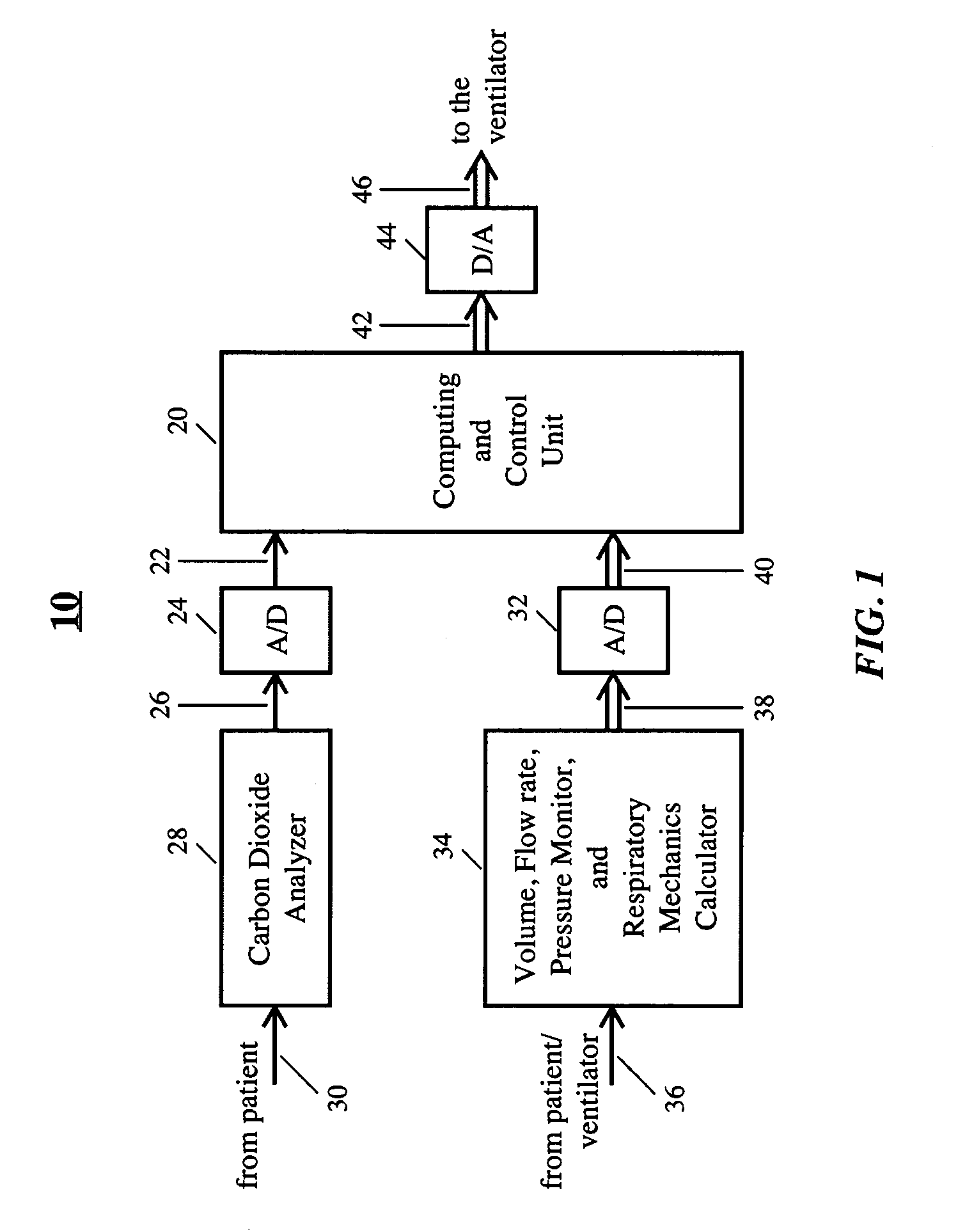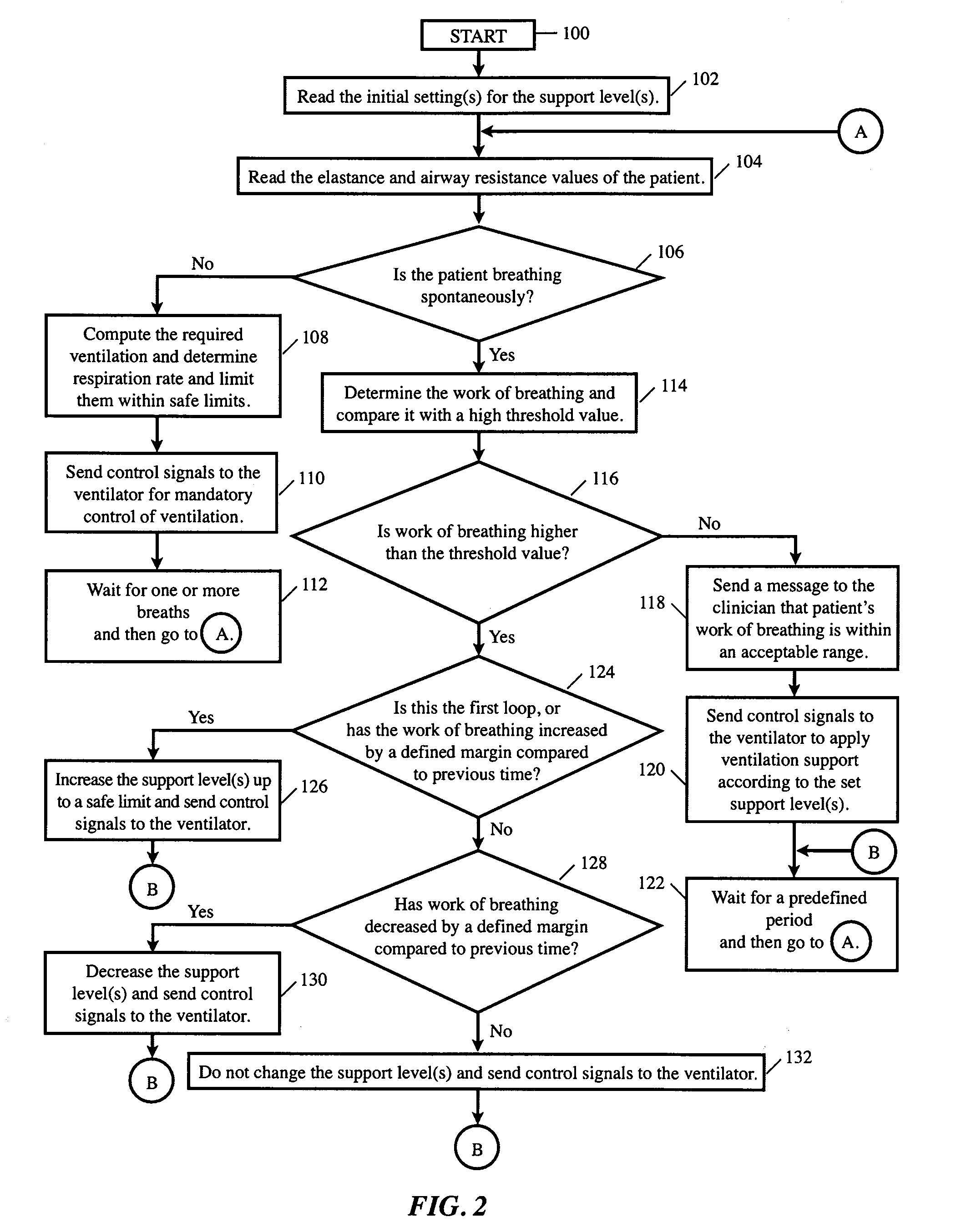Automatic Control System For Mechanical Ventilation For Active Or Passive Subjects
a control system and passive subject technology, applied in the field of mechanical ventilators, can solve the problems of increasing the mortality and morbidity rate of patients on mechanical ventilation, increasing the work rate of breathing, and causing asynchrony between the machine and the patient, so as to prevent fatigue and dyspnea, reduce the work rate of breathing, and increase the support level
- Summary
- Abstract
- Description
- Claims
- Application Information
AI Technical Summary
Benefits of technology
Problems solved by technology
Method used
Image
Examples
example
[0043]During ventilatory treatment, the average measured minute ventilation, AMMV, is calculated to be 5 lit / min, the required minute ventilation, RMV, is calculated to be 7 lit / min, and the support level, α, is 0.5. Using equation 18, the new support level is calculated as:
α1=1+(AMMV / RMV)(α−1)=1+(5 / 7)(0.5−1)=0.64
[0044]If more push is required in the weaning phase, and the weaning factor β is 0.8, then the new support level is calculated by using equation 19 as:
α1=1+(AMMV / RMV)(α−1)(1 / β)=1+(5 / 7)(0.5−1)(1 / 0.8)=0.55
[0045]Therefore, the new support level can be adjusted accordingly.
Description of the Preferred Embodiments
[0046]Referring now to the drawings, wherein like numerals represent like elements, there is illustrated in FIG. 1 a schematic representation of an apparatus 10 for carrying out a method of the present invention.
[0047]A Computing and Control Unit 20 receives input data 22 from an A / D converter 24. The input 26 to the A / D converter 24 may be provided by a CO2 analyzer 28...
PUM
 Login to View More
Login to View More Abstract
Description
Claims
Application Information
 Login to View More
Login to View More - R&D
- Intellectual Property
- Life Sciences
- Materials
- Tech Scout
- Unparalleled Data Quality
- Higher Quality Content
- 60% Fewer Hallucinations
Browse by: Latest US Patents, China's latest patents, Technical Efficacy Thesaurus, Application Domain, Technology Topic, Popular Technical Reports.
© 2025 PatSnap. All rights reserved.Legal|Privacy policy|Modern Slavery Act Transparency Statement|Sitemap|About US| Contact US: help@patsnap.com



